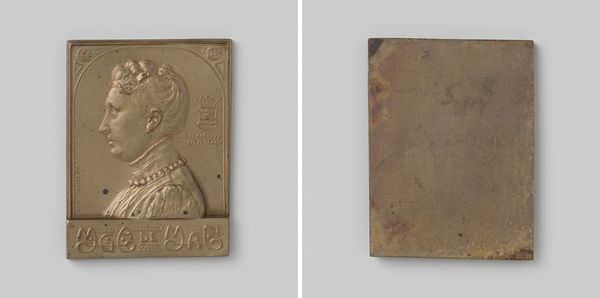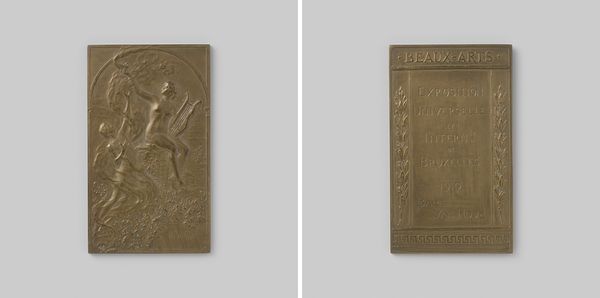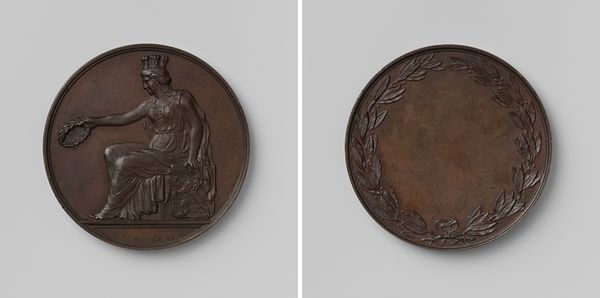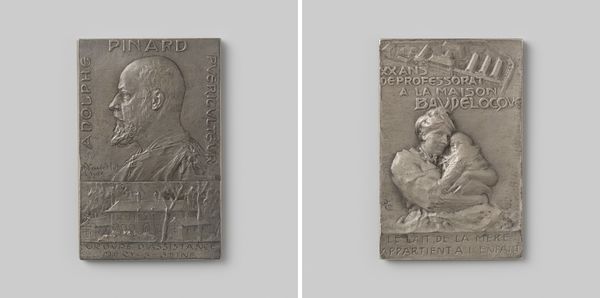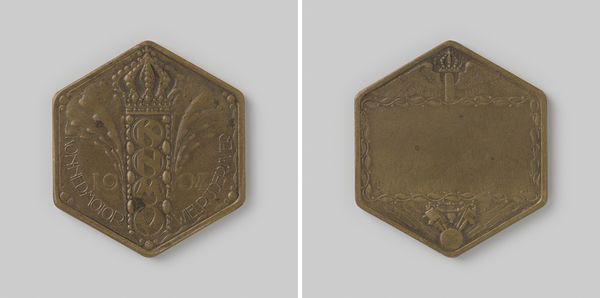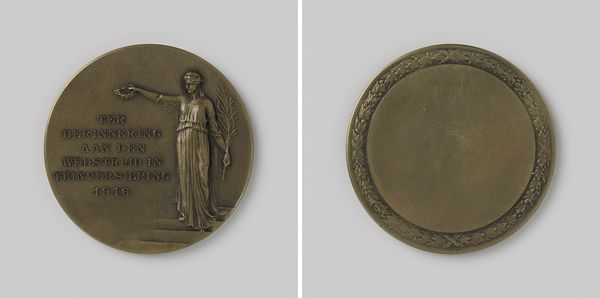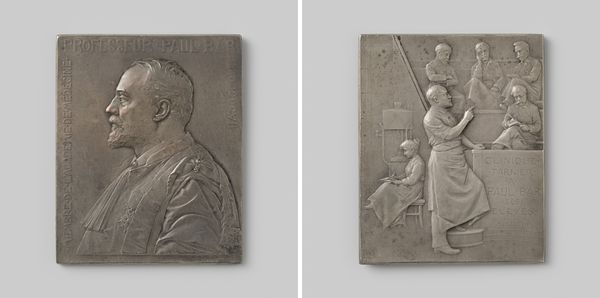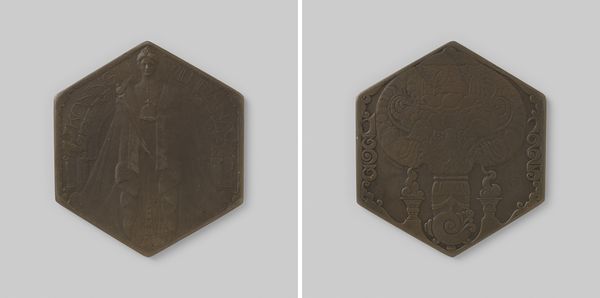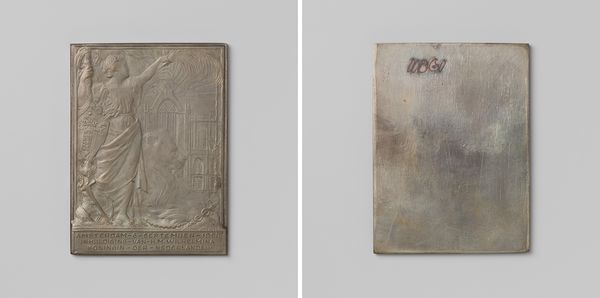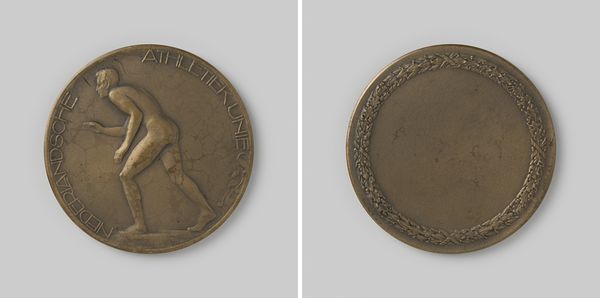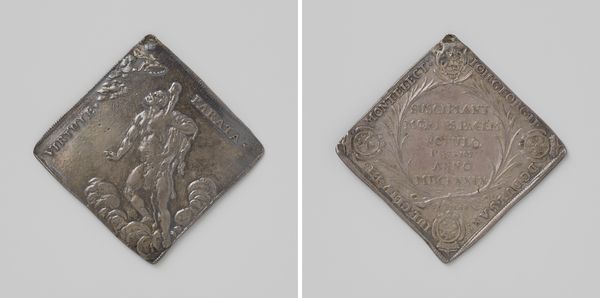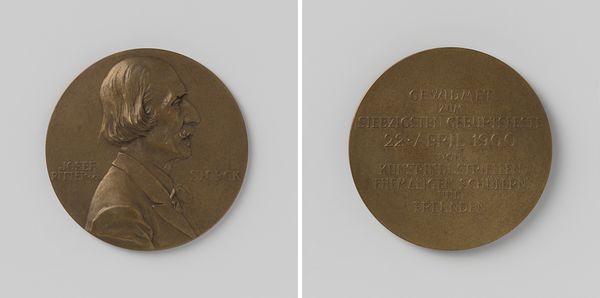
relief, bronze, sculpture
#
portrait
#
art-nouveau
#
sculpture
#
relief
#
bronze
#
sculpture
#
history-painting
Dimensions: width 2.0 cm, height 3.1 cm, weight 9.14 gr
Copyright: Rijks Museum: Open Domain
Curator: It seems so static, doesn’t it? I am interested in the social context surrounding it, of course. Editor: Static? Perhaps restrained. The bronze's subdued sheen and shallow relief contribute to its quietness, though. Tell me about this relief. Curator: The relief is titled "Geboorte van prinses Juliana 1909" ("Birth of Princess Juliana 1909"), it's the work of Pier Pander, dating back to—as the title suggests—1909. It marks a significant historical moment, not only for the Dutch Royal Family, but also concerning shifts in expectations around royal motherhood. Editor: The composition is carefully constructed. The rounded top and inscription, “De Vervulling" meaning “The Fulfillment” frame the intimate scene of the queen holding the baby. It emphasizes the closed form typical of art nouveau. The interplay of these structural features draws the eye. Curator: It absolutely draws the eye, but also invites questions about how the depiction of royal women impacts perceptions of womanhood more generally. The image of motherhood and duty here is intertwined. Is motherhood a destiny of fulfilment for every woman, as inscribed, or are the implications different for a future Queen? Editor: Perhaps, though I perceive "fulfilment" here as aesthetic. It's not merely a word but an integral part of the composition that is crucial in its totality. What is striking, if you permit, is the artist’s effort to capture the idealized image of motherhood rather than a simple portrait, right down to the material’s sheen and malleability, expressing tenderness. Curator: But shouldn’t we question the act of idealizing it, the symbolism embedded in presenting the Princess's birth as the 'fulfillment'? Editor: The symbol perhaps stands here to solidify the sculpture. The symmetry is undeniably strong, presenting balance in form. The light reflecting, gives it a spiritual glow and invites viewers into a personal contemplation of how its pieces complete one another. Curator: Fair enough, seeing these aesthetic elements does refocus how to unpack and contextualize how “fulfilment” works ideologically, for Pander and for his public, back then. Editor: Indeed. It encourages appreciation for a time when craft and symbolism were considered as the key to art's value.
Comments
No comments
Be the first to comment and join the conversation on the ultimate creative platform.
